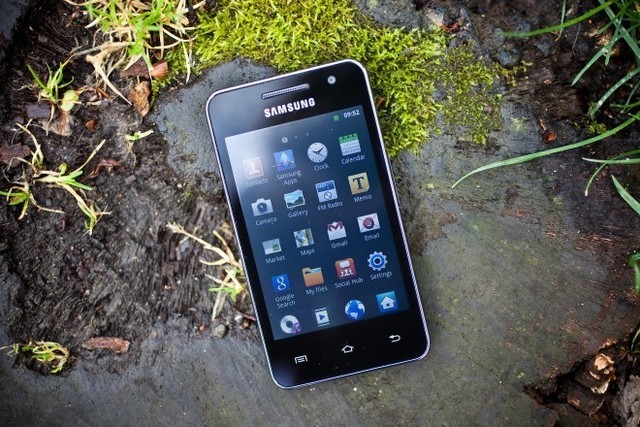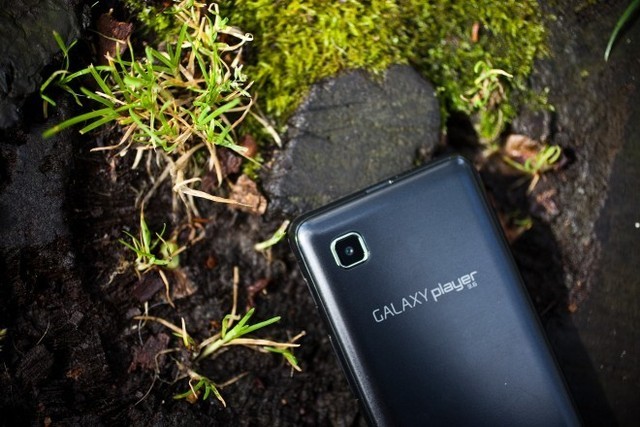
When Apple debuted the iPod a decade ago, it redefined mobile audio technology. Other companies had already launched "MP3 players," but Apple propelled portable digital music hardware into the mainstream. Sony and Creative Labs struggled to compete, but ended up with fail on their faces.
And now we have Samsung, the latest to throw its hat into the portable media player ring with the release of the Galaxy Player 3.6. This hardware is aimed at anyone considering the iPod touch, and emerges in a long line of copycat devices—Samsung has followed Apple’s lead into phones, tablets and ultrabooks.
But does the Galaxy Player 3.6 pack enough features and performance to capture the hearts (and wallets) of customers, especially when the smartphone is fast becoming the only portable media device we really need?
Possibly. First off, it’s cheaper. The Player 3.6 costs $150, while the cheapest iPod touch, the 8GB version, costs $200. It’s powered by Android 2.3 (Gingerbread) with Samsung’s TouchWiz user interface sitting atop the operating system—just like Samsung’s smartphones.
In fact, the Player 3.6 almost is a Samsung smartphone—sort of like a neutered Galaxy S.
Unlike Apple’s hardware, however, the Samsung media player feels lightweight in the hand, and even a bit cheap and chintzy. And, of course, if you’re comparison shopping against Apple hardware, you’ll be giving up the iPod’s superior App Store selection. And, hell, this little Android-based media player isn’t even running Google’s most advanced mobile OS, Android 4 (Ice Cream Sandwich).

Speaking of software, I’ve never been a huge fan of Samsung’s TouchWiz UI. It’s a skin—a set of custom graphics to make Android look different than it does on competing devices—and skinning Android with skill and elegance is tough to pull off. For one thing, it puts undue strain on system resources. Android runs faster as a barebones OS, sans an outer layer.
And to some degree, that graphical overhead would seem to impede performance. Flicking back and forth through app menu screens on the Player 3.6 feels sluggish—more so than it should, considering the Player has a 1GHz CPU that’s driving a puny screen resolution of 480 x 320 on a 3.6-inch display. Apps launch quickly, but interface swiping just feels slow. Indeed, anyone familiar with the fluidity of the latest iOS phones or even the stock Ice Cream Sandwich build on the Samsung Galaxy Nexus phone will notice a difference.
Another qualm: Unlike devices that run Ice Cream Sandwich, the Player 3.6 requires physical keys in order to navigate Android 2.3 (Gingerbread). This presents a potential problem: If Samsung upgrades this Player to Ice Cream Sandwich at some point, those physical keys will remain as useless, vestigial keepsakes.
Is there any upside to buying the Player 3.6 instead of an iPod touch? Yeah, a few. First, while the Samsung only comes with 8GB of onboard storage, it includes a microSD card slot that allows expansion of up to 32GB. While you can go up to 64GB with iPods, you’ve got to pay hundreds more for that extra storage.
And then there’s the desktop version of iTunes—it’s not the most graceful app for managing music, and transferring it to and from a portable music player. Android devices allow drag-and-drop transfers, and that alone might compel users (even Apple diehards) to try out the Samsung as a dedicated media player.

Oh, did we mention sound? It’s fine—or at least more than sufficient for MP3-quality tracks through a pair of free earbuds.
And, of course, Samsung’s "Player" moniker extends beyond just music. The device also supports video, which you can watch either on the 3.6-inch screen or, more impressively, mirrored to various high-end Samsung HDTVs via WiFi (a feature we haven’t yet tested).
I only spent one day with the Player 3.6, and this is by no means Gadget Lab’s final review, but I think the device will be a tough sell to consumers. When I’m out and about, I want to carry as few devices as possible, so listening to music directly off my phone makes most sense. I’m not ready to carry a dedicated media player, and I suspect others have the exact same trepidation.
That said, I can see the Player 3.6 appealing to people who want to conserve their phone’s battery life, while still having the option to listen to music or watch movies on the run. To this end, I can see iPhone users particularly interested in the device—it provides a window into the world of Android without high entry fees.
But is even $150 too much to pay for a second mobile device? The Player 3.6 drops on May 4, so we’ll see soon enough.
Listing image by Photograph by Ariel Zambelich/Wired
reader comments
140